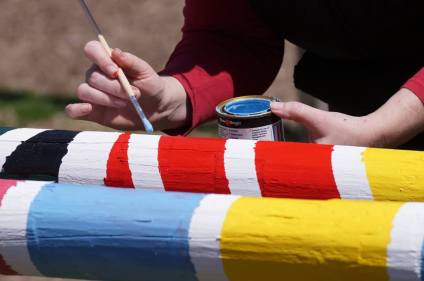Whenever I work with our horses – especially if I am trying to teach them a new thing, I keep trying to stick to one important principle – “have I set my horse up for success?” In other words, is the task I have set him something that he has the “skills” to achieve? If my answer is “no”, then I look for a way to break the task down into smaller steps that are easier to achieve. Once we’ve done the smaller task, we then look to increase what is asked of him. My overall goal is to have the horse in a place where it is relaxed and confident.
As a principle, It is something that many of us could do well to remember for ourselves. Over the past few weeks I have had a few conversations with different people and have been struck at how much pressure they put themselves under. Just recently, I was working with two clients who are part of a new initiative we are introducing at Spark of Hope – our Corporate Leadership and Training Program. This program focuses on communication, leadership and self-awareness and how these things help improve
 our ability to function as leaders and team members. This particular morning, our two visitors were set a task – encouraging a horse to step over any one of our “trotting” poles (large coloured poles that we use in a variety of activities at Spark of Hope). It sounds like a simple task, however, it requires being able to work as a team, to communicate with your other team members and the horse and to be aware of your own body language and position. What makes the task even more challenging is that it is performed “at liberty” – there are no halters or lead ropes on the horse – the horse is free to go wherever it wishes – as the participant, without touching, scaring or bribing the horse, you have to direct the horse using only your body.
our ability to function as leaders and team members. This particular morning, our two visitors were set a task – encouraging a horse to step over any one of our “trotting” poles (large coloured poles that we use in a variety of activities at Spark of Hope). It sounds like a simple task, however, it requires being able to work as a team, to communicate with your other team members and the horse and to be aware of your own body language and position. What makes the task even more challenging is that it is performed “at liberty” – there are no halters or lead ropes on the horse – the horse is free to go wherever it wishes – as the participant, without touching, scaring or bribing the horse, you have to direct the horse using only your body.
On this particular morning our clients embraced the challenge, despite having never done anything like this before, with a great deal of enthusiasm. I was, however, intrigued at their approach to the task. Rather than choose the closest pole, they chose what they considered to be the most difficult pole to reach (one of the poles furthest away from them and the horse). Having successfully navigated their horse closer to the pole, they realised that their horse was about to step over a pole but not their pole of choice. They stopped the horse, and proceeded to ask him to perform a very difficult move, in order to reach their desired pole. Needless to say, this failed and they ended up navigating another pole instead.
At our debrief, we discussed their approach – even though they achieved the goal (get the horse to step over a pole) – they felt they hadn’t succeeded. They had taken the task, amplified it and set themselves a more loftier goal. Though the rules for this activity were few, they had added a few more of their own, complicating what was required of them. When they didn’t achieve the task they were left with a feeling of having failed…
this activity were few, they had added a few more of their own, complicating what was required of them. When they didn’t achieve the task they were left with a feeling of having failed…
Which brings me back to my original principle – set yourself up for success. Why make something more difficult than it need to be? Yes it is admirable to want to do the bigger, harder “thing” but if it leaves us feeling deflated, unable to celebrate the success we have had, are we really in a better position? Would it have been better to start small and build on that, rather than start large, fail and then feel like nothing had been achieved?
At Spark of Hope, one of our values is excellence – doing something better today, than what you did yesterday – we don’t settle for mediocrity but we also understand that the pathway to achieving great things is to start doing the little things well…
“The one who manages the little he has been given with faithfulness and integrity will be promoted and trusted with greater responsibilities…” (Luke 16:10a)
